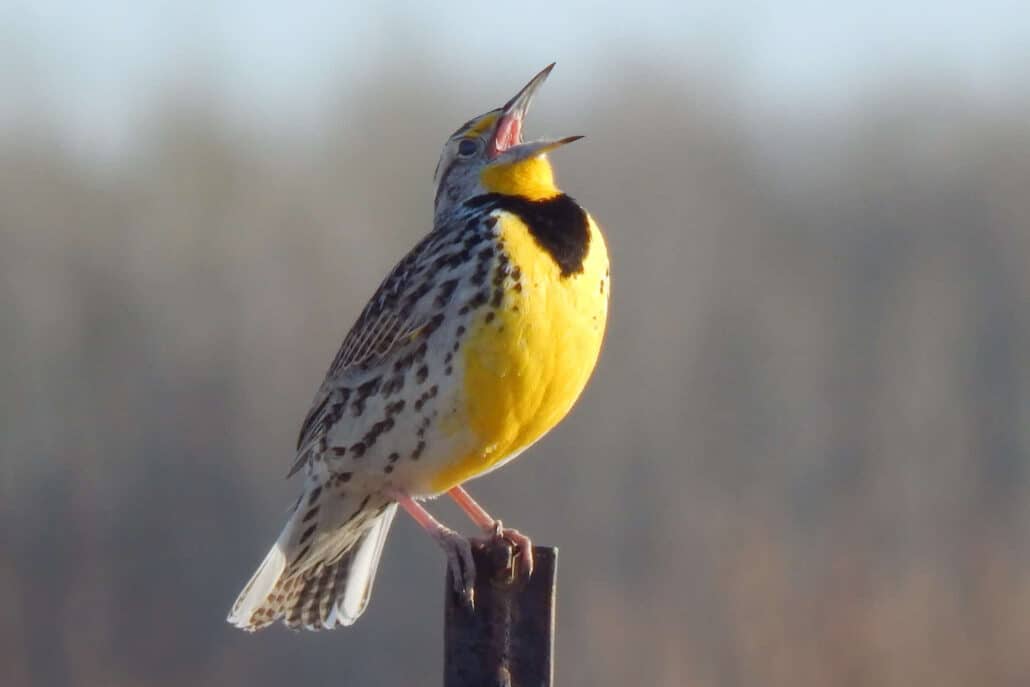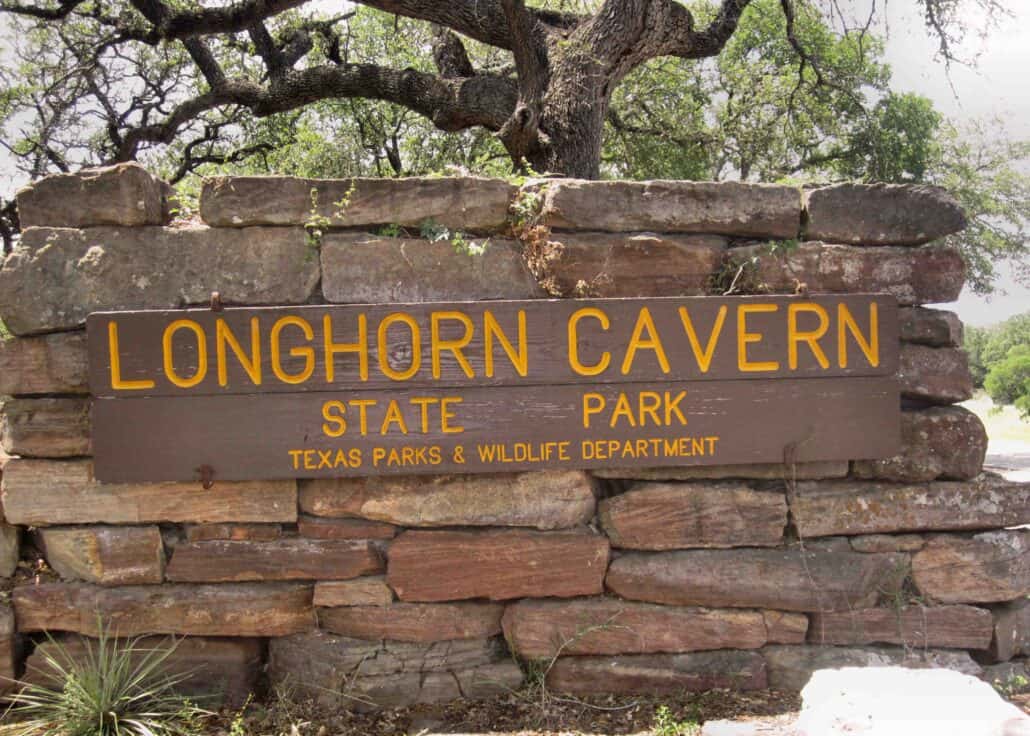Far from the lights and tumult of Las Vegas and Reno, the other end of Nevada is a wild and isolated region that beckons to birders. Northern Nevada is a true remnant of the Old West: sparsely populated, starkly beautiful, and an outdoor delight. All those symbols of the Wild West—hardy cowboys on horseback, working cattle ranches, wild mustang, tumbleweeds—that you thought had faded into oblivion? They’re still here. This is one of the most remote and isolated places left in the Lower 48, crowded with snow-capped peaks, expansive high-desert valleys, open marshes, and plenty of wildlife. It is a great place to spot pronghorn, mountain lion, mountain goat, mule deer, bighorn sheep, badgers, and hundreds of species of birds.
If you love the outdoors, you’ll love northern Nevada. In addition to birding, this rugged area is a great place for fly-fishing, hiking, skiing, or just laid-back driving through tiny cowboy towns. It is the antithesis of glittery, pulsating Vegas. It is also the perfect setting for an exciting birding adventure.
There are several excellent birding spots within a day’s drive of each other: Ruby Lake National Wildlife Refuge, the Goshute Mountains, Lamoille Canyon, Ruby Crest National Recreation Trail, and Great Basin National Park. Sprinkle in some intriguing historical sites and spectacular scenery for an unforgettable visit.
The jump-off point for exploring the region is the town of Elko, four hours west of Salt Lake City on I-80. In the late 1800s Elko was a stronghold for Basque sheepherders who emigrated from their homeland in northern Spain to raise sheep in the nearby Ruby Mountains. You’re about to embark into a remote region; this could be your last look at civilization for a while, so don’t leave town without enjoying a hearty and traditional Basque meal at one of many Basque-style restaurants.
Ruby Crest National Recreation Trail
From Elko, head south to the Ruby Mountains—named after the abundant garnets present in the range—and hike among 11,000-foot peaks and picturesque high-altitude lakes on the Ruby Crest National Recreation Trail. This rugged 38-mile route roughly traces the crest of the Rubies. It begins in Lamoille Canyon and ends at Harrison Pass. A strenuous hike? For sure, but it is perhaps the best way to encounter North America’s only population of Himalayan snowcock, a quarry that was featured in the movie The Big Year. The Nevada Fish and Game Commission introduced these birds from their native Pakistan in 1961, and a wild population has become established. In the movie, Steve Martin and Jack Black hire a helicopter to bag the elusive snowcock, but you don’t need to go to that extreme. They stay above tree line and have been reported at higher elevations on Thomas Peak, Wine Peak, and Tipton Peak, among other locations on the trail. In addition to snowcocks, the high peaks of the Rubies offer opportunities to spot mountain bluebirds, golden eagles, Clark’s nutcrackers, black rosy-finches, and bald eagles.
Lamoille Canyon Scenic Byway
If you’re not up to a rigorous trek, opt for the easily accessible Lamoille Canyon. This 10-mile-long canyon features multiple peaks topping 11,000 feet, and the Lamoille Canyon Scenic Byway that winds up through the canyon offers optimal views of the glaciated walls where bighorn sheep, mule deer, and mountain goats may be spotted from your car. Himalayan snowcocks have also been spotted in the canyon, near the Island Lake area. Keep your eyes open for Clark’s nutcrackers, wild turkey, mountain chickadees, red-breasted nuthatches, ferruginous hawks, and golden eagles. And don’t go stumbling down the trails with your eyes focused on the trees; porcupines are seemingly everywhere, and brushing up against one would definitely ruin your day.
Ruby Lake National Wildlife Refuge
After you leave Lamoille Canyon, catch a hearty dinner under the watchful eye of a mounted deer head at the quaint Pine Lodge in the town of Lamoille. Then drive south to Ruby Lake National Wildlife Refuge, a 35,000-acre expanse of marshland that is home to healthy concentrations of waterfowl. Drive the dike roads through the marshes looking for pronghorn and badgers, and check off burrowing owls, pinyon jays, short-eared owls, northern harriers, yellow-headed blackbirds, marsh wrens, and—the refuge’s real attraction—thousands of ducks, geese, and other waterfowl. You can depend on seeing canvasback, cinnamon teal, gadwall, ruddy duck, northern pintail, green-winged teal, redhead, American wigeon, northern shoveler, bufflehead, common goldeneye, ring-necked duck, lesser scaup, and even an occasional wood duck. There’s also a chance here to spot sandhill cranes, white-faced ibis, double-crested cormorants, great egrets, western and Clark’s grebes, long-billed curlews, and Nevada’s only resident population of trumpeter swans. Ferruginous hawks and golden eagles often can be seen in the tall trees near historic Bressman Cabin on the refuge, and northern harriers are common in the marshes.
If your quest goes beyond waterfowl, the areas around Cave Creek near the refuge headquarters and the nearby Gallagher State Fish Hatchery are a haven for broad-tailed, Calliope, rufous, and black-chinned hummingbirds; yellow-headed blackbirds; black-billed magpies; lazuli buntings; and Williamson’s sapsuckers. An impressive number of turkey vultures roosts in the trees near the refuge headquarters in the summer.
The hatchery is always a fruitful birding spot, and a wide variety of birds can be picked up there—a state-record white wagtail was spotted in the parking lot in 2010. The willow trees ringing the outflow ponds just behind the hatchery are a reliable area for picking up downy and hairy woodpeckers, yellow warblers, marsh wrens, a variety of sparrows, and an occasional long-eared owl. The trail into Indian Creek, two miles north of the refuge headquarters, is a good place to spot mountain goats, loggerhead shrikes, chukar, bushtit, western bluebirds, and mountain chickadees.
Watch for Lewis’s woodpeckers on the telephone poles along the road to the refuge (for a period each spring it seems as if there is one on every third or fourth pole). Closer to the refuge headquarters, refuge staff recently added several artificial burrows to increase the population of burrowing owls.
The refuge offers essentially three-season birding, because the road across Harrison Pass from the west is often impassible and even the road from Wells can sometimes be problematic. If you do go in winter, you can see tundra swans, as well as a good number of overwintering rough-legged hawks.
The refuge and adjoining areas are also home to some interesting historical sites. The infamous Donner Party temporarily camped about 1,000 feet south of the current refuge headquarters building near Cave Creek. And a few miles farther south, the original Pony Express Trail transected Ruby Valley. The crumbling remnants of Fort Ruby, an 1860s-era U.S. Army outpost that was constructed near the Pony Express Trail to protect riders and settlers from Native American raiders, are still evident along the refuge road. The fort was so remote that soldiers stationed there called it the “Worst Post in the West.”
Great Basin National Park
From the refuge, the drive to Great Basin National Park near the town of Baker, Nevada, is a starkly beautiful drive on Highway 50, the “Loneliest Road in America.” Great Basin National Park is home to 13,063-foot Wheeler Peak, glacial moraines, 5,000-year-old bristlecone pines, mountain goats, bighorn sheep, and mountain lions. Hike Wheeler Peak and spot Clark’s nutcrackers and Swainson’s and ferruginous hawks.
Elevation in the park ranges from about 5,000 feet to more than 13,000 feet, and the diversity of habitats means a huge variety of birds. Hike Lehman Peak Trail alongside Lehman Creek to spy western scrub-jay, pinyon jay, Steller’s jay, Say’s phoebe, and plumbeous vireo. Alpine Lakes Loop takes you by two lakes above 10,000 feet and is great for seeing raptors, including northern goshawk, golden eagle, and sharp-shinned, rough-legged, Swainson’s, and ferruginous hawks. The steep and rugged Wheeler Peak Summit Trail Count takes you to the top of Wheeler Peak, where you can count on chukar, common ravens, mountain bluebirds, Townsend’s solitaire, and black-billed magpies.
Spend the night in Baker and enjoy a hearty meal in the eclectic Lectrolux Cafe—the food is homemade and delicious.
Goshute Mountains
East of Ruby Valley are the Goshute Mountains, dominating the busiest raptor migration route in the western United States. Running north to south, the Goshutes act as a funnel, concentrating migrating raptors between the barren Great Salt Lake to the east and the Great Basin mountain ranges to the west. The Goshutes range up to 10,000 feet, and thousands of migrating birds take advantage of this forested finger of bristlecone pines and fir trees to rest and forage during their annual fall migration. The result is a raptor-watcher’s dream—hundreds of migrating raptors soaring past on a daily basis.
For more than two decades HawkWatch International has conducted bird counts and banding programs in the Goshutes during the migration season (late August to early November). Standing on the crest of the Goshutes, you can observe golden and bald eagles, American kestrels, merlins, peregrine and prairie falcons, northern goshawks, northern harriers, and sharp-shinned, Cooper’s, red-tailed, broad-winged, Swainson’s, ferruginous, and rough-legged hawks. Add in the chance to glimpse flammulated, northern saw-whet, and great horned owls and your raptor quota is pretty much filled up.
HawkWatch International welcomes visitors to its observation area and at its banding site, where you can observe birds in the hand and the banding process up close. From the observation area on the crest of the Goshutes you can gaze on soaring raptors at or below eye level. Hundreds of raptors migrate past the Goshutes in a typical day, and the HawkWatch banding station captures, bands, and releases dozens of birds daily.
Northern Nevada offers the entire range of birding in a microcosm: raptors, waterfowl, montane species, woodland birds, prairie birds, and high-desert species—all in an area that can be birded in a relatively short period of time. Throw in the harshly captivating mountain ranges, eye-pleasing scenery, cowboy ambience, and untamed spaces and you’ll have a hard time finding a better and more diverse birding destination.




